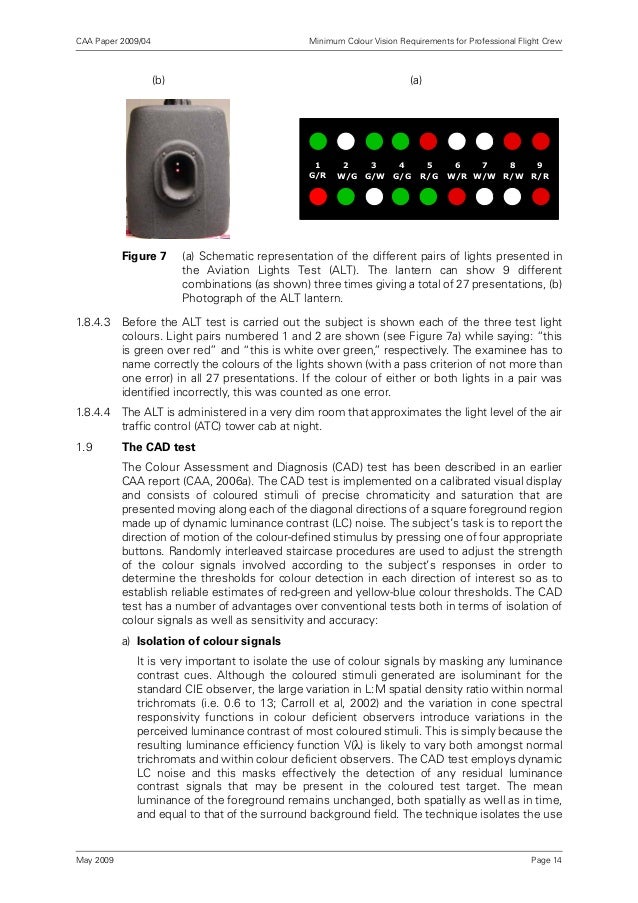Aoc Hrr 2nd Edition Test

Well, took the test today. I took the floating E's test, and thought it went well. Had 20/20 vision on the charts, and then the dreaded words-'now lets check your color vision'.
If you don't know what it is, it shows 2 rows of 4 boxes, and in each box is a different color-kinda like the Ishihara plates-and the E is facing a different direction in each one. Flew through the first 4-no problem, then got the next 1 and started having problems with the last 3. The nurse assured me I only need to get 6 out of 8, so I got the next one right and flipped the last two-so I got the 6 I needed. I was extremely happy!! Well, that lasted for about 5 minutes-I went in to see the doc, and he said-'I see you had a problem with the color? Let's get out the color plates and see how bad it is'. I panicked.that is why I went to him-I knew he had the alternate test I could pass.
Nov 10, 2008 The truth be told is that there are tons of color deficient ATP pilots flying people all over the place at any time.There has never been a problem with them other than the Fed Ex flight which two non color deficient pilots saw the same thing as the color deficient co pilot.There are color deficient ATP pilots on this board!
Sure enough, I can't see hardly any of the plates. He then said the dreaded words-I am going to have to put 'Not valid for night flight or by color signal'. I couldn't believe what I was hearing-I thought I was ok with the first test.then this happened. How can I pass one test, then he re-evaluates me and gives me the restriction. Is that right?? Can he do that? Of course he tells me, now you can contact FSDO and schedule a light gun test and get that taken care of.
1000 lugares que ver antes de morir pdf descargar gratis. But, from what I heard you don't want to do that because if you mess up, you get the permenant restriction. Any ideas or suggestions would be GREATLY appreciated!!! I got this from the AOPA website. I've been dealing with the same thing so I feel your pain. Whatever you do take the lightgun test as a last resort.
An applicant does not meet the color vision standard if testing reveals: An applicant does not meet the color vision standard if testing reveals: • All Classes • Seven or more errors on plates 1-15 of the AOC (1965 edition) pseudoisochromatic plates. • AOC-HRR (second edition): Any error in test plates 7-11. Because the first 4 plates in the test book are for demonstration only, test plate 7 is actually the eleventh plate in the book. (See instruction booklet).
• Seven or more errors on plates 1-15 of Dvorine pseudoisochromatic plates (second edition, 15 plates). • Six or more errors on plates 1-11 of the concise 14-plate edition of the Ishihara pseudoisochromatic plates. Seven or more errors on plates 1-15 of the 24-plate edition of Ishihara pseudoisochromatic plates. Nine or more errors on plates 1-21 of the 38-plate edition of Ishihara pseudoisochromatic plates. • Seven or more errors on plates 1-15 of the Richmond (1983 edition) pseudoisochromatic plates. • Farnsworth Lantern test: An average of more than one error per series of nine color pairs in series 2 and 3.
(See instruction booklet). • Any errors in the six plates of the Titmus Vision Tester, the Titmus II Vision Tester, the Titmus 2 Vision Tester, the OPTEC 2000 Vision Tester, the Keystone Orthoscope, or Keystone Telebinocular. • LKC Technologies, Inc., APT-5 Color Vision Tester: The letter must be correctly identified in at least two of the three presentations of each test condition. (See APT-5 screening chart for FM-related testing in instruction booklet).